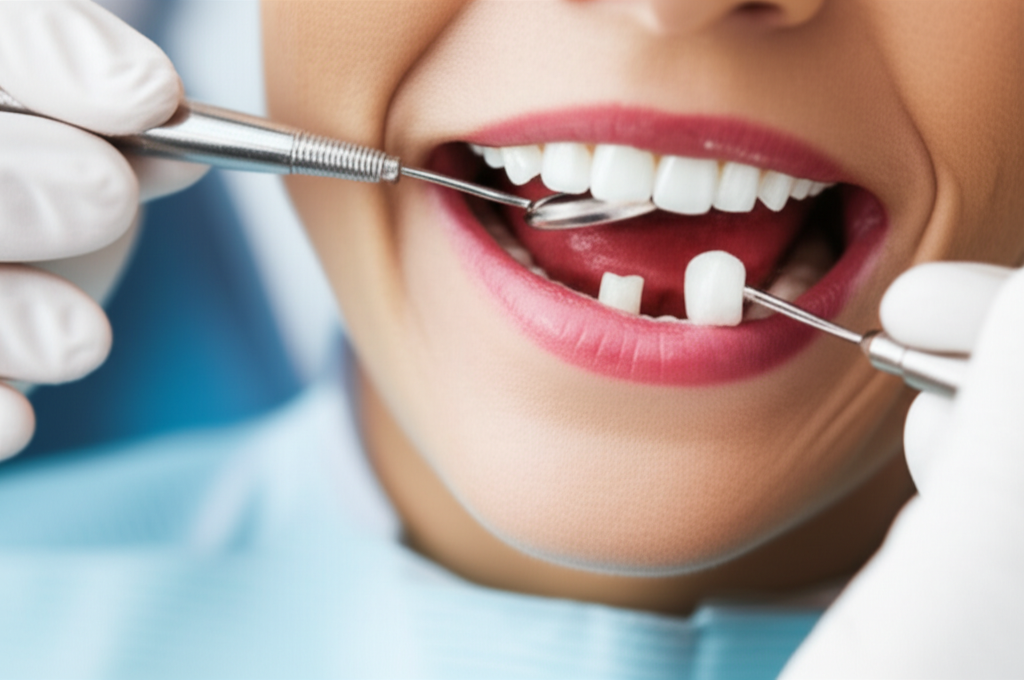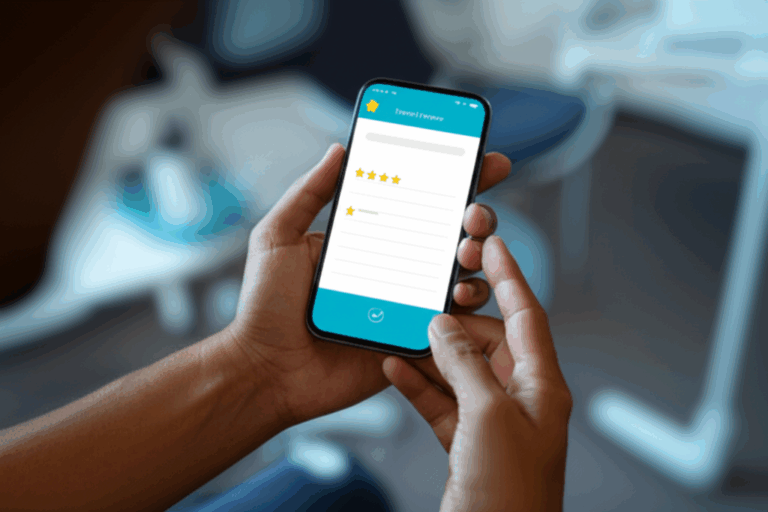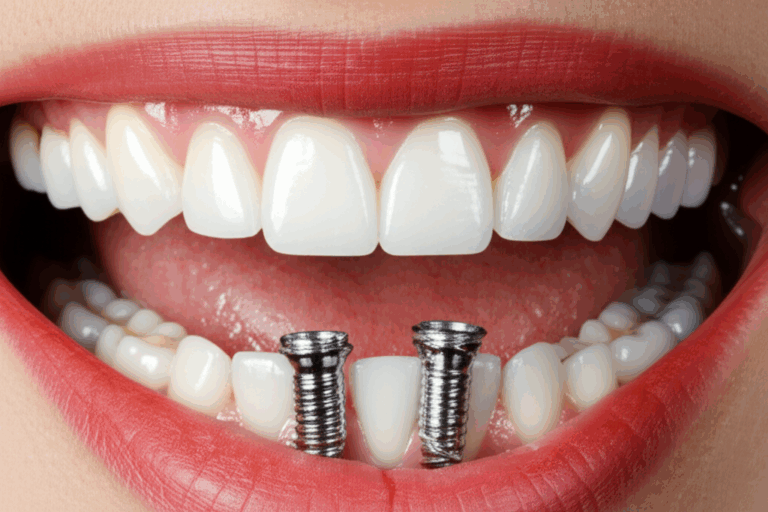
How Long Does a Dental Crown Take at the Dentist? (Traditional vs. Same-Day Options)
Table of Contents
- Appointment 1: Preparation & Temporary Crown
- The Waiting Period: What Happens in the Lab
- Appointment 2: Permanent Crown Placement
- How Same-Day Crown Technology Works
- The Single-Visit Process Step-by-Step
- Why I Picked a Same-Day Crown (And Why You Might Too)
- Crown Materials and Case Difficulty
- Dentist Skill, Dental Lab Speed, and Technology
- More Dental Work That Can Make It Take Longer
- Right After: Sensitivity and Comfort
- Getting Used to Your New Crown
Introduction: My Story With Dental Crowns
I’ve spent a lot of time at the dentist, but nothing made me more worried than when I needed my first dental crown. How long would it take? Would I miss a lot of work? Would it hurt? I really wanted clear answers before I made my appointment.
Now, after getting several crowns—both the regular kind and a same-day CEREC crown—I’ve picked up some things that can help you. Whether you just want to know what to expect or you have an appointment coming up, I’ll tell you just how long the crown process takes, what makes it longer or shorter, and what happens at every step.
The Traditional Dental Crown Process: Two Appointments (or More)
Most people need more than one trip to the dentist for a dental crown. That was true for me with my first crown. This classic way does take more time, but it’s pretty simple.
Appointment 1: Preparation & Temporary Crown (60–90 minutes)
My first crown appointment took a while. Here’s what happened:
- Consultation & Exam: The dentist looked at my tooth and took an X-ray to see if I needed a crown and to plan things. Sometimes they find more problems, like extra decay or an old filling that needs fixing.
- Numbing & Tooth Shaping: Once I agreed, the dentist gave me numbing shots and shaped the tooth. This part takes time, especially if they have to rebuild some of the tooth.
- Impressions (Digital or Goopy Mold): My dentist first used a squishy tray to make a mold. That felt weird, but didn’t last long. More recently, I had a digital scan—it only took about five minutes and was way easier.
- Shade Matching: If it’s a front tooth, they check the color so it looks like the other teeth.
- Temporary Crown: Before I left, they glued on a plastic temporary crown. The dentist told me not to eat sticky or crunchy foods, since temporaries aren’t very strong.
The first appointment usually took an hour to an hour and a half. It felt longer my first time, mostly because I was nervous.
The Waiting Period (1–3 Weeks): What Happens in the Lab
After that first visit, you wait for your real crown. Here’s what’s happening:
The dentist sends your impression and color choice to a lab—sometimes it’s a local crown and bridge lab, or sometimes a special zirconia lab if you want a certain material. At the lab, workers use the mold or scan to make a crown that fits your tooth exactly. The process, and how busy they are, decides how long it takes—could be one to three weeks, but two weeks is pretty usual for most of my crowns.
The laboratory work is why it takes so long—the techs have to make sure the crown looks and fits just right. Some dentists may use a china dental lab for price or quality reasons, especially for harder jobs.
Appointment 2: Permanent Crown Placement (30–60 minutes)
When your new crown arrives, you go back to the office. This time, it’s much faster:
- Removing the Temporary: They gently take it off, making sure the tooth underneath is okay.
- Cleaning and Checking the Fit: The dentist tries on the new crown, making sure the fit and color look good. Sometimes they need to adjust it. You’ll bite down, try it out, and say if it’s comfortable.
- Gluing the Permanent Crown: When you and your dentist agree it’s good, they use strong glue to make it stay.
- Final Little Changes: The dentist might have to adjust the bite so your teeth fit together perfectly.
This part usually takes half an hour to an hour. Once you’re done, you have your finished tooth.
Same-Day Dental Crowns: How Technology Changed My Experience
To be honest, I didn’t believe in “same-day crowns” at first. But after trying both ways, I can say they really are quicker. If you hate making extra appointments or missing more work, this is a great choice.
How Same-Day Crown Technology Works
Same-day crowns use something called CEREC. Basically, the dentist uses fancy computers and a milling machine right there in the office to make your crown while you wait.
No more mailing off molds, wearing a temporary, or coming back later. Not every dentist has this, but more clinics are getting it, especially if they want to be modern or work faster. Some offices use a digital dental lab to help with tricky cases.
The Single-Visit Process Step-by-Step (2–3 Hours Total)
Here’s how my same-day crown went:
I was done in less than three hours—one appointment, one round of numbing, one drill.
Why I Picked a Same-Day Crown (And Why You Might Too)
The best things were:
- No temporary crown to worry about.
- Only one appointment to schedule.
- Fewer shots—only got numbed once.
- I got to see the technology, which actually helped me feel calmer.
If you want something fast and easy, a same-day crown is worth asking about. It’s not for every tooth or situation (some tougher back teeth or jobs needing a perfect look might need the regular way), but I always ask about it now.
Things That Affect How Long a Crown Takes
After having a couple crowns made, I’ve noticed the time can change a lot depending on your situation. Here’s what I’ve learned (and what my dentist explained):
Crown Materials and Case Difficulty
- Porcelain, Zirconia, Metal, and E.max Crowns: Some materials are faster because they work easier with new machines. E.max crowns and zirconia can often be done same-day if your dentist has the right tools. Gold and porcelain-fused-to-metal usually need a lab and take longer.
- How Bad the Tooth Is: If your tooth is really broken or you had a root canal, getting it ready could take more time or more appointments.
- Getting Crowns on Lots of Teeth: If you only need one or two, it’s pretty quick. But if you need several at once, you’ll probably need more visits—same-day is good for a small job, but bigger cases may need a good outside lab.
Dentist Skill, Dental Lab Speed, and Technology
A dentist who does lots of crowns can work faster and make it easier on you. The best offices have good labs they trust or have their own machines to get crowns done quickly. When my dentist worked with an experienced lab, my waits were much shorter.
If a lab is fast and careful—like a solid digital dental lab—your crown may come back quickly and fit better.
More Dental Work That Can Make It Take Longer
Root canals, cutting the gums (crown lengthening), or extra fillings can add days or even weeks. After my root canal, I had to wait for my tooth to calm down before getting the crown. If you’re fixing a few dental problems at once, expect to spend more time in the chair and more days waiting for your final crown.
Life After a Dental Crown: What to Expect (and My Tips)
Getting a crown is more than the time you sit at the dentist. What you do afterward matters for how your tooth feels and how long your crown lasts.
Right After: Sensitivity and Comfort
The first few days after my crown, my tooth felt a little sensitive, especially with hot or cold drinks. That’s normal—it just needs time to get better. Using toothpaste for sensitive teeth and skipping super-hard or sticky foods for a few days helps.
With a temporary crown, don’t eat chewy or crunchy stuff. I learned this the hard way when mine came off with a chewy candy—luckily, my dentist put it back on quickly.
Getting Used to Your New Crown
A well-made crown or one made with new tech should fit pretty well. For me, it took about a day to get used to the feel. If your bite feels weird or something’s bugging you, call your dentist—they can fix it in a few minutes. Most crowns feel normal after about a week.
Want your crown to last? Brush, floss, and don’t use your teeth to open things or bite hard stuff. My crowns have lasted over 10 years this way.
Conclusion: Planning Your Dental Crown Without Worry
If you’re reading because you want to know how long getting a crown will take, I hope my story clears things up for you. Here’s the summary:
- Traditional Crowns: Two trips; each 1–1.5 hours, with 1–3 weeks wait in between.
- Same-Day Crowns: One visit, about 2–3 hours, and you’re done.
- Timeline Stuff: How tough your case is, the type of crown, how fast the lab is, and any extra work can all change the timeline.
My advice? Ask your dentist what they can do and what they suggest for your tooth. Every mouth is different, but with the right info and a dentist you like, you’ll soon have your smile back.
Want to know more about how digital crowns are made or what dental labs do? Check out digital dental lab and crown and bridge lab for lots of good info. They helped me understand how much easier technology can make this stuff.
Frequently Asked Questions (Short and Simple)
Q: How long does it take to get a regular crown at the dentist?
A: Most regular crowns need two appointments. First one takes 60–90 minutes, second one 30–60 minutes, with 1–3 weeks in between for the lab to finish your crown.
Q: Can I get a crown in one visit?
A: Yes, many dentists now can do same-day CEREC crowns. You’ll be there 2–3 hours but it’s all done in one go.
Q: What if my temporary crown falls off?
A: Call your dentist. They can stick it back on quickly. Don’t eat sticky or hard foods until your real crown is in.
Q: Will my new crown feel like my other teeth?
A: Most crowns feel natural in about a week. If your bite feels off, go back so your dentist can fix it.
Q: How do I make my crown last longer?
A: Brush, floss, and don’t use your teeth to open packages. Crowns can last 5–15 years or more if you take care of them.
If you have to get a crown, I hope my story and these tips help make it less scary. Dental work is never fun, but knowing what’s coming—and what your choices are—can make it a lot easier. Good luck!








